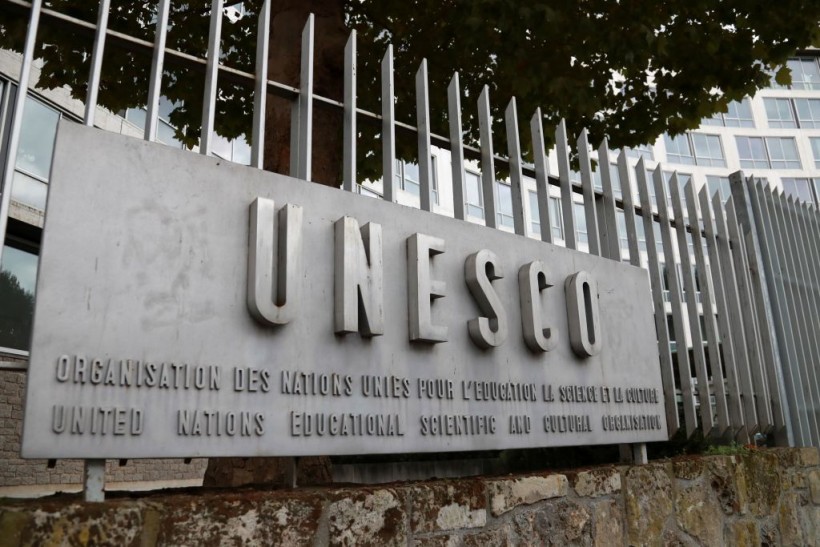United Nations Educational, Scientific and Cultural Organization (UNESCO) added 41 new World Heritage sites, including Korean burial grounds and Viking-age fortresses. The list now surpasses 1,100 protected sites globally, reflecting their universal significance in culture and history. These sites are recognized for their "Outstanding Universal Value."
There are still ongoing talks to potentially add one more site to its list and expand the reach of existing areas, including Madagascar's Andrefana Dry Forests. Meanwhile, the following are some of the newly added World Heritage Sites in 2023:

A picture taken on October 12, 2017 shows the logo of the United Nations Educational, Scientific and Cultural Organisation (UNESCO) headquarters in Paris.
Cultural sites
- Old Tea Forests of the Jingmai Mountain, China- This cultural landscape features ancient tea plantations and villages where tea plants thrive thanks to subtropical monsoons. Indigenous communities engage in traditional ceremonies rooted in the belief of spirits residing among the tea plants.
- Gaya Tumuli burial mounds, South Korea-
These ancient burial mounds belonged to the Gaya Confederacy and hold symbolic significance related to their political structure and shared cultural elements. They also reflect changes in the structure of Gaya society over time.
- Deer stone monuments, Mongolia-These intricately adorned deer stones, dating from the Late Bronze Age, bear engravings of stags and were utilized in ceremonies and funerals. They hold significance within the culture of Eurasian Bronze Age nomads.
- Gedeo cultural landscape, Ethiopia-
These monuments are situated within sacred forests and hold significant importance for the Gedeo community. They are closely associated with indigenous practices related to forest management and agriculture.
- Prehistoric Talayotic Menorca sites, Spain- These megalithic structures, dating from the Bronze Age and located on Menorca island, have served various purposes, including defense, and some exhibit potential astronomical significance.
- Koh Ker, Cambodia-
These ancient temples and sanctuaries situated within the Cambodian jungle were once a short-lived capital of the Khmer Empire and are adorned with sculptures, inscriptions, and wall paintings.
- Viking-age fortresses, Denmark-
These Viking-age fortresses are characterized by their ring-shaped design and were strategically located near crucial land and sea routes. The exact purpose behind their circular structure continues to be a mystery.
READ ALSO: Chernobyl Nuclear Disaster: Ukraine Eyes UNESCO World Heritage Tag for Power Plant
Natural Sites
- Anticosti, Canada- Situated on Quebec's largest island, Anticosti preserves Earth's best fossil record of the initial mass extinction approximately 447 million years ago. Its remarkable abundance, diversity, and well-preserved fossils enable world-class scientific research, with thousands of bedding surfaces facilitating the study of ancient shallow sea life.
- Bale Mountains National Park, Ethiopia- Its distinctive landscape results from historical lava outflows and glaciation. The park boasts diverse and unparalleled biodiversity across ecosystems, species, and genetics, and it serves as the source of major rivers, providing vital resources to millions of people.
- Evaporitic Karst and Caves of Northern Apennines, Italy-
The site in Italy consists of more than 900 caves within a 62-mile radius and is recognized as the world's first and most extensively studied "evaporitic karst," where minerals are preserved in sandstone formations. This remarkable location also houses some of the deepest gypsum caves, reaching depths of up to 265 meters below the surface.
For the full list of UNESCO World Heritage Site, visit their website.
RELATED ARTICLE: Ivindo National Park Becomes Second UNESCO World Heritage Site in Gabon, Securing International Support for Conservation
Check out more news and information on UNESCO Heritage Site in Science Times.














